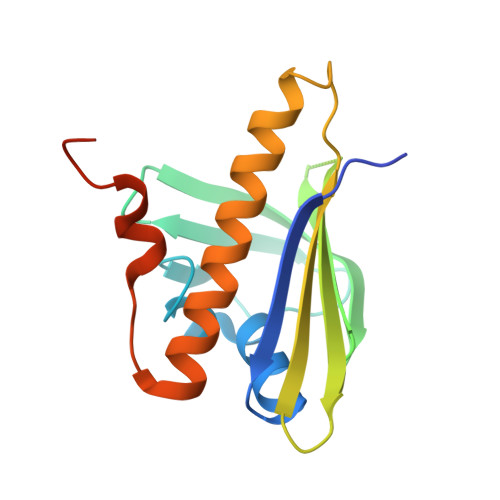Lack of evidence that Pseudomonas aeruginosa AmpDh3-PA0808 constitute a type VI secretion system effector-immunity pair.
Colautti, J., Bullen, N.P., Whitney, J.C.(2023) Mol Microbiol 119: 262-274
- PubMed: 36577706
- DOI: https://doi.org/10.1111/mmi.15021
- Primary Citation of Related Structures:
8ES5 - PubMed Abstract:
Type VI secretion systems (T6SSs) are cell envelope-spanning protein complexes that Gram-negative bacteria use to inject a diverse arsenal of antibacterial toxins into competitor cells. Recently, Wang et al. reported that the H2-T6SS of Pseudomonas aeruginosa delivers the peptidoglycan recycling amidase, AmpDh3, into the periplasm of recipient cells where it is proposed to act as a peptidoglycan degrading toxin. They further reported that PA0808, the open reading frame downstream of AmpDh3, encodes an immunity protein that localizes to the periplasm where it binds to and inactivates intercellularly delivered AmpDh3, thus protecting against its toxic activity. Given that AmpDh3 has an established role in cell wall homeostasis and that no precedent exists for cytosolic enzymes moonlighting as T6SS effectors, we attempted to replicate these findings. We found that cells lacking PA0808 are not susceptible to bacterial killing by AmpDh3 and that PA0808 and AmpDh3 do not physically interact in vitro or in vivo. Additionally, we found no evidence that AmpDh3 is exported from cells, including by strains with a constitutively active H2-T6SS. Finally, subcellular fractionation experiments and a 1.97 Å crystal structure reveal that PA0808 does not contain a canonical signal peptide or localize to the correct cellular compartment to confer protection against a cell wall targeting toxin. Taken together, these results cast doubt on the assertion that AmpDh3-PA0808 constitutes an H2-T6SS effector-immunity pair.
Organizational Affiliation:
Michael DeGroote Institute for Infectious Disease Research, McMaster University, Hamilton, Ontario, Canada.














